Dalits Media Watch
News Updates 29.11.11
Dalit's house torched in Kanpur, four children hospitalized - Indian Express
Dalit couple 'beaten' by panch, threatens suicide - The Tribune
http://www.tribuneindia.com/2011/20111129/haryana.htm#10
Protest against diversion of SC, ST funds- The Hindu
http://www.thehindu.com/todays-paper/tp-national/tp-andhrapradesh/article2649091.ece
NCPRI bats for inclusion of dalits in Lokpal - The Times Of India
The private sector's turn to deliver - The Hindu
http://www.thehindu.com/opinion/lead/article2668998.ece
The emerging phase in poverty eradication - The Hindu
http://www.thehindu.com/arts/books/article2669234.ece
Indian Express
Dalit's house torched in Kanpur, four children hospitalised
Express news service
Posted: Nov 29, 2011 at 0435 hrs IST
Lucknow A dalit's house was allegedly set on fire, leaving four of his teenaged children critically injured, in Kanpur while another dalit was allegedly burnt to death in Kannauj district, on Monday. Both incidents were reported to be fallout of the land disputes.
In Kanpur, DIG Rajesh Kumar Rai said a fire broke out in Hari Ram Gautam's house at Sidhhanath Nagar locality early this morning when three of his daughters - Maya (23) Mamta (19) and Sunita (17) - and son Babu (22) were asleep inside. Gautam's wife Elaichi Devi, who was sleeping outside the house, woke up after hearing screams of her children and raised an alarm.
The locals somehow doused the flames, but the children had suffered extensive burns by then. They were rushed to the Ursala Hospital where the doctors confirmed that Maya had suffered over 70 per cent burns and was critical. Elaichi Devi lodged a complaint with the Chakeri police station alleging that Pappu Jaiswal of the same locality had torched her house following a dispute over land.
Kanpur SP (City) East Kushahar said Gautam and Pappu, both, claimed possession over a small piece of land, but neither had legal document to prove ownership. Gautam lives separately in another house in the same locality while his wife and children were staying at his parental house.
Pappu, who was arrested, denied his involvement in the incident. The police is investigating Elaichi Devi's claim that she had seen Pappu and his associates running away after torching her house, Kushahar added.
In Kannauj district, 75-year-old Ram Kishun Kori was burnt to death after a fire broke out in his hutment in Thathia area this morning.
Kannauj Superintendent of Police (SP) Rajender Singh said Kori's nephew Ahibaran has lodged a complaint alleging that his neighbour Shiv Narain and latter's family members Akhilesh, Awadhesh and Ram Shanker set his uncle's hutment on fire when he was asleep, causing his death. The SP also said that Kori used to live alone since his wife died about 10 years ago. He had no child and his nephew used to look after him. Kori had two bighas of land and a dispute with Ahibaran over the land was pending in court.
The Tribune
Dalit couple 'beaten' by panch, threatens suicide
http://www.tribuneindia.com/2011/20111129/haryana.htm#10
Bhanu P Lohumi, Tribune News Service
Karnal, November 28
A Dalit couple, working as safai karamcharis in Sangoha village, is running from pillar to post seeking justice and action against the village sarpanch and panch for allegedly beating up and harassing them and stopping their wages.
In a written statement to the press, Chanderbhan and his wife, Vidya Devi, working in the village as safai karamcharis since December 2007, alleged that they were also working in the fields of sarpanch Rishipal Singh and used to collect cowdung and bring fodder.
"In March we could not go to the fields of Rishpal Singh for three days due to marriage of our daughter and he was so much annoyed that he sent panch Gurmukh Singh, who threatened that we would be 'fired' if we did not collect the cowdung and bring fodder from the fields," they alleged.
Chanderbhan also alleged that panch Gurumukh beat him up mercilessly and broke one of his teeth and also abused his wife. He also registered a false case of theft against them and stopped their salary.
"They are influential people and get away with anything and there is a threat to our lives as the police, district administration and others concerned have not taken any action on our complaint," he lamented.
"We have been running from pillar to post for justice and have also met the local MP, the DSP and the Deputy Commisioner, but nothing has been done so far and no one has come to our help.
We have three children and old parents to look after and our lives have become so miserable that we will be compelled to commit suicide in case justice is not done," he added.
The Hindu
Protest against diversion of SC, ST funds
http://www.thehindu.com/todays-paper/tp-national/tp-andhrapradesh/article2649091.ece
VISAKHAPATNAM, November 22, 2011
Staff Reporter
Activists and leaders of Dalita Hakkula Porata Samiti (DHPS), A.P. Vyavasayika Karmika Sangham, and A.P. Girijana Samaikya held a demonstration at the Collectorate here on Monday in protest against massive diversion of funds meant for SC,ST welfare and development under the special component plan (SCP).
Funds allocated for SC, ST welfare in the State budget were being diverted to other general schemes and projects in gross violation of the spirit of SCP, they allege. Dalit and Girijan organisations had been raising the issue at different forums and fighting against such
violations for quite some time but their agitations had remained a cry in the wilderness, the leaders said.
They were of the view that SC and ST MLAs were unable to champion their own communities' cause as they were all scattered in different political parties and could not take on their leadership on this score due to clash of interests both political and party wise.
The forum leaders and MLAs had been assured of justice by former Chief Ministers N. Chandrababu Naidu and Y.S. Rajasekhara Reddy and present Chief Minister N. Kiran Kumar Reddy but none of the assurances were fulfilled, .
The leaders said a solution to this problem lay in a protracted struggle for which the multiple organisations in the State were gearing up. DHPS district secretary B. Venkatarao said during the past two decades Rs.21,609 crore of SC funds and Rs.5,000 crore of ST funds
had been diverted from among the allocated funds.
In the current 2011-12 budget of Rs.470 crore had been diverted from the allotted funds of Rs.7,704 crore. Similarly, under the ST sub-plan Rs.326 crore had been diverted to other projects.
The government had been using the diverted funds for outer ring road and Hussein Sagar modernisation projects and several other schemes. The government was violating its own order issued in 1980 creating an SC,ST sub-plan component fund exclusively for the economic
emancipation of the socially backward sections.
Vyvasaya Karmika Sangam district president Shivalanka Kondala Rao and Girijana Samaikya district secretary Bushanam demanded that government should not allow the unspent funds allocated in the budget to lapse but must be added to the next year budget.
The Times Of India
NCPRI bats for inclusion of dalits in Lokpal
TNN | Nov 29, 2011, 02.23AM IST
NEW DELHI: National Advisory Committee (NAC) member Aruna Roy extended her support to dalit activist Udit Raj's demand on Monday to include dalit representatives in the proposed Lokpal institution. She said she is not against any person, but wants all section of the society gets representation in the body.
Addressing a rally, organized by Udit Raj-led All India Confederation of SC/ST Organizations, here, she said, "In any new provision of Lokpal there should be provisions to include dalits. Any discrimination on the basis of caste, colour or creed and injustice to a community or group are also corruption. A law without provisions for minorities is invalid."
She said that the proposal submitted by the National Campaign for Peoples' Right to Information (NCPRI) proposes that the search committee for Lokpals should have members from minority community and dalits. "It should also have regional representation," she added.
Roy said if the Lokpal committee has five members, two should be from the Dalit community and suppose two elected candidates have equal votes then preference should be given to the one from the marginalized section (Dalit).
Raj said that he agrees with Anna Hazare on the issue of corruption. "We support his demands within the framework of the constitution, but he has not included our demands for reservation in his draft," he said.
He also alleged that the assurance of Hazare and Arvind Kejriwal to include representatives from all communities in Lokpal was only a lip service. "We urge the government that Lokpal bill be passed in current Parliament session only but after addressing these genuine demands," he said.
Raj demanded reservation for dalits in private jobs to improve their lives. He also demanded reservation in higher judiciary.
The Hindu
The private sector's turn to deliver
http://www.thehindu.com/opinion/lead/article2668998.ece
Sukhadeo Thorat
The government's decision to set aside a 20 per cent quota for SC/ST vendors in its purchases, if accepted by every sector on a wider scale, has the potential to makegrowth pro-poor and inclusive.
The Central government has finally announced a policy reserving 20 per cent of its purchases for micro and small enterprises run by entrepreneurs belonging to the Scheduled Castes and the Scheduled Tribes. The new procurement policy will cover 358 items to be purchased by Central ministries, departments and public sector undertakings. The 20 per cent purchase norm will become mandatory after three years. This is in line with the policies that have been pursued for some time by Mukul Wasnik, Minister of Social Justice and Empowerment; the final approval came from the Prime Minister's Office.
This is as historic a decision as the provision of reservation in public employment, education and politics. Dr. B.R. Ambedkar first argued for compensatory policies in the private sector, in a representation to the Southbrough Committee on January 25, 1919. He shared with the members of the committee the painful incident of an 'untouchable' Mahar woman who was taken to the police court for selling watermelons, because she had violated the customary rules which prohibited 'untouchables' from doing business: they were supposed to undertake only the so-called polluting occupations. The demand for policies to compensate the 'untouchables' for denial of poverty rights was repeated in a memorandum submitted to the Constituent Assembly in 1947: "Discrimination against citizens by the private employers in the factories and in commercial concerns on the grounds of race or creed or social status should be treated as an offence," observed Dr. Ambedkar.
Although the situation has changed much since 1919, the consequences of denial of property rights continue to haunt Dalits — which is reflected in extremely low ownership of private enterprise by them. In 2010, a National Sample Survey exercise revealed that the percentage of self-employed households among the Scheduled Castes was only 14 in rural areas and 29 in urban areas, compared with 17 and 37 per cent for higher castes. The economic census of private enterprises for 2005 showed a similar pattern. The share of the Scheduled Tribes, the Scheduled Castes, the Other Backward Classes and the higher castes in total private enterprises was about 2, 6, 30, and 61 per cent respectively in the urban areas, while the figures were 6, 10, 40, and 45 per cent in the rural areas.
Thus, the graded inequality in the ownership of private enterprise continues despite the grant of equal property rights: the share of the Scheduled Castes and the Scheduled Tribes in total private enterprise has remained much less than their share in the population. Besides, the Scheduled Caste entrepreneurs and the businesses run by them have faced discrimination in accessing some inputs and services, if not all, that are necessary for the production and sale of goods and services. This is particularly the case for communities such as Valmikis, engaged in the sale of consumer goods such as milk, vegetables and similar products, leading to market failure caused by untouchability. It is in this background that the decision by the United Progressive Alliance government to set aside a 20 per cent quota in government purchases from SC/ST vendors assumes significance.
Limitations
The policy does have its limitations as procurement under the policy will cover only purchases made by Central ministries, departments and PSUs. Public enterprises account for only 5 per cent of the total enterprises in India. The remaining 95 per cent, private enterprises, are without any such obligation. The corporate sector has developed affirmative action policies on a voluntary basis and adopted a code of conduct; entrepreneurship development is one of the components of this policy. Associations of industries have recognised the role of market support for success in integrating marginalised communities in mainstream industry. The code for affirmative action policy talks about encouraging member-companies to make companies owned by those from the SC and ST communities a part of their supply-vendor chain.
However, the policy of market support through partnership with those from the SCs and the STs has not found favour with the companies. The Confederation of Indian Industry (CII) reports that a beginning has been made in this direction by only half-a-dozen companies. CII, Assocham, and FICCI, whose membership runs into thousands of companies, are way behind in accepting the market support policy in purchases from SC and ST vendors. It is time the private sector, which makes purchases worth millions of rupees each year, also accepted the government's procurement policy in such a manner that a majority of its member-companies are covered and join hands with the government in a spirit of partnership.
The government's initiative on procurement, if accepted by the private sector on a wider scale, has the potential to make growth pro-poor and inclusive. A very high proportion of enterprises run by the SCs and the STs are household-based, almost 80 per cent, much higher than the corresponding figure of 61 per cent for higher castes. With low capital and traditional techniques, earnings are low, and this results in high levels of poverty among the self-employed and casual labour engaged in them. In 2009-10, of the total rural Scheduled Caste self-employed households, about 24 per cent were poor, the ratio being 15 per cent for higher castes. The ratio of poor for urban Scheduled Caste self-employed households was 35, as against 20 per cent for higher castes. The percentage of self-employed poor among the Scheduled Tribes was more than 30 per cent. The pro-poor growth requires that the productivity and earnings of these enterprises are raised with necessary support from the government and the private sector. Providing market support through reservation in purchases is one way to transform this low-productivity and poverty-stricken sector into a high-productivity sector and to make growth inclusive of the poor.
But the goal of integration of the SC and ST businesses into the main supply chains may be realised only if the private sector also follows the government's policy in purchases for all member-companies. This will make growth pro-poor and help reduce poverty among the self-employed and the casual labour engaged in them.
Look East
The private sector can possibly do more. Instead of looking to the West, it will be useful to draw lessons from the East, particularly an experiment in Malaysia. The Malaysian government, through its affirmative action policy launched in the 1970s, managed to increase ownership in private enterprises for the discriminated group of Malaya from only 2 per cent in 1970 to 20 per cent in 1990. The government brought about a systematic redistribution of ownership of private capital in favour of discriminated groups in a period of two decades.
We have the responsibility to repay the social debt the nation owes to the 'untouchables' for having denied them property rights and left them assetless for a pretty long period in history.
(Sukhadeo Thorat is Professor, Centre for the Study of Regional Development, Jawaharlal Nehru University, Delhi, and Chairman, Indian Council of Social Science Research. He is at thoratsukhadeo@yahoo.co.in)
The Hindu
The emerging phase in poverty eradication
http://www.thehindu.com/arts/books/article2669234.ece
V. M. Rao
POVERTY AND SOCIAL EXCLUSION IN INDIA: Rs. 495. PERSPECTIVES ON POVERTY IN INDIA — Stylised Facts from Survey Data: Rs. 695. Both the books by the World Bank and pub. by Oxford Univeristy Press, YMCA Library Building, Jai Singh Road, New Delhi-110001.
Eradication of poverty poses two challenges. First, the ongoing programmes need to be continually monitored and evaluated to make them more effective and synergic and also to extend their reach. The second, and a more formidable challenge, is to bring into the mainstream those who have been left out of the processes of growth and development.
Poverty can be alleviated by well-conceived programmes. But removing 'exclusion' — a factor that severely impairs any development effort by creating an island of discontent — requires societal reforms that are far more difficult to implement. Given the increasing attention the objective of 'inclusive growth' has been getting in recent times, India's policy perspective related to poverty alleviation must go beyond the 'poverty line' and extend to structures and processes underlying 'exclusion'.
The two books under review provide a wealth of ground level data on the excluded groups and they are presented under the conventional groupings — the Scheduled Castes; the Scheduled Tribes; and women. For obvious reasons, there is some overlapping between the two, and this review is based chiefly on the first book, Poverty and Social Exclusion in India.
To highlight some of the distinctive features of the broad picture that emerges, the forest-dwelling Scheduled Tribes suffer exclusion, both in the geographical and physical senses. They are victims of the 'out-of-sight-out-of-mind' syndrome afflicting policymakers. "Excess mortality among tribal children continues to be the starkest marker of tribal disadvantage…The low participation in decision-making and their elimination from land and forests are central to the continued exclusion of tribals from progress and development."
As for the Scheduled Castes, they are treated by other communities as unclean and as groups that should be kept at a distance and away from economic and social activities. They are not isolated from the mainstream, as the STs are, and have the advantage of being familiar with the mainstream community and its activities and institutions. The book, Poverty and Social Exclusion, notes: "There has been some convergence in education outcomes, particularly in post-primary education between Dalit and non-SC/ST men… the advance has been impressive, [but] the Dalits still lag behind because of their low starting points." The Dalits face discrimination in labour market and find it hard to move from casual labour to non-farm occupations.
An interesting observation about women is that the gender bias operates in the mainstream as well as the excluded categories. "Female disadvantage in India persists despite high rates of economic growth. Women are dying unnecessarily both in infancy and motherhood; the outcomes are poorer among the Dalits and Adivasis."
The studies find that "traditional hierarchies have remained stubborn against growth." While the Indian Constitution has set the stage for "unparalleled affirmative action and other forms of positive actions," the result has been patchy affecting some groups more than others and with none securely accommodated in the mainstream. The lesson for the future is that "inclusion is not just about changing outcomes, but crucially about changing processes that produce and reproduce exclusionary outcomes."
Going by some of the more recent developments and trends, it seems the next couple of decades may bring major changes in the attitude and condition of excluded groups. For example, the agitations by farmers and tribals have compelled the government to amend the laws related to land acquisition and alienation so as to protect their interests better. Women are slowly but steadily getting into Panchayats and may soon get a statutory share of seats in Parliament and the State Legislatures. The minorities could well add thrust to the movement for 'inclusion.
Public response to Anna Hazare's movement is a clear indication that Indian society is getting impatient with undelivered promises on equitable growth and development. While it is obvious that more effective implementation of conventional anti-poverty programmes is essential for tackling the problem of exclusion, it would not suffice. The obstacles to inclusion will have to be removed.
The policymakers would do well to bear in mind two things. One, the urban environment softens the tyranny of caste hierarchy that prevails in rural communities. And two, increasing non-farm employment in urban as well as rural areas will enable the marginalised sections in agriculture to move out.
The other book under review, Perspectives of poverty in India, with its focus on these two points, discusses in detail their implications for development strategy and policy framework.
--
.Arun Khote
On behalf of
Dalits Media Watch Team
(An initiative of "Peoples Media Advocacy & Resource Centre-PMARC")
...................................................................
Peoples Media Advocacy & Resource Centre- PMARC has been initiated with the support from group of senior journalists, social activists, academics and intellectuals from Dalit and civil society to advocate and facilitate Dalits issues in the mainstream media. To create proper & adequate space with the Dalit perspective in the mainstream media national/ International on Dalit issues is primary objective of the PMARC.



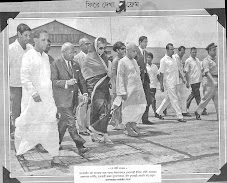



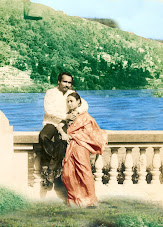






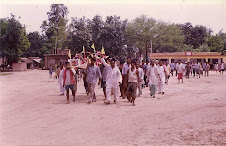

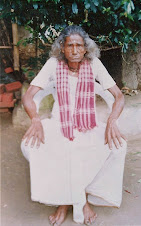
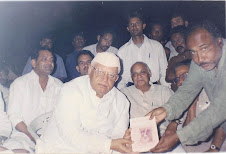
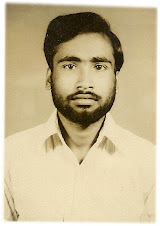



No comments:
Post a Comment